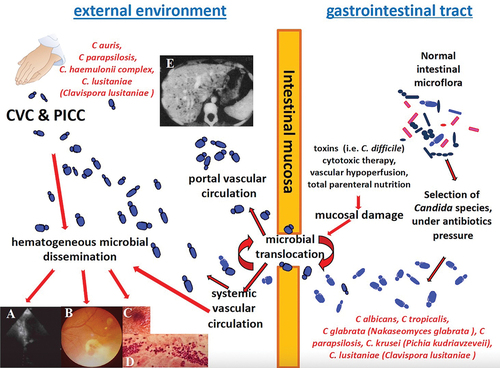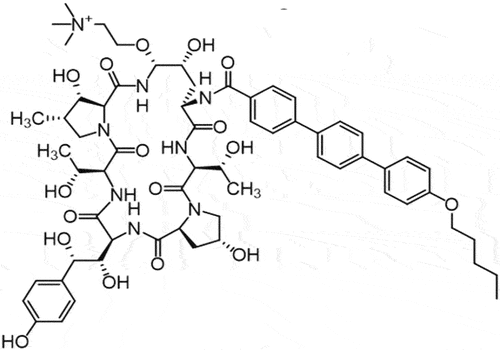Figures & data
Figure 1. Pathogenesis and hematogenous routes of Candida species bloodstream dissemination with possible secondary infections as endocarditis (A), retinitis (B), skin fungal vasculitis (C) with macular/papular lesion (D) and multifocal hepatitis (E). CVC: central venous catheter; PICC: peripherally inserted central catheter.

Table 1. Exogenous versus endogenous route of invasive Candida infection: differences in etiologies, epidemiology, and antifungal resistance.
Table 2. Underlying diseases and conditions, main Candida species involved, therapy options and management of different ICIs.
Table 3. Pharmacokinetic parameters of rezafungin vs. older echinocandins.

